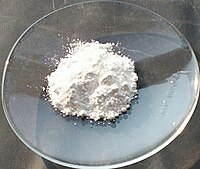
Polysaccharides from ginseng leaves inhibit tumor metastasis via macrophage and NK cell activation.
Sign Up to like & getrecommendations! Published in 2017 at "International journal of biological macromolecules"
DOI: 10.1016/j.ijbiomac.2017.05.055
Abstract: In this study, we purified the polysaccharide fraction (GS-P) from the leaves of Panax ginseng C.A. Meyer and analyzed its monosaccharide composition and antitumor and antimetastatic activity in vitro and in vivo. GS-P is a… read more here.
Keywords: polysaccharides ginseng; metastasis; treated mice; ginseng leaves ... See more keywords

Proteomic Analysis Reveals a Critical Role of the Glycosyl Hydrolase 17 Protein in Panax ginseng Leaves under Salt Stress
Sign Up to like & getrecommendations! Published in 2023 at "International Journal of Molecular Sciences"
DOI: 10.3390/ijms24043693
Abstract: Ginseng, an important crop in East Asia, exhibits multiple medicinal and nutritional benefits because of the presence of ginsenosides. On the other hand, the ginseng yield is severely affected by abiotic stressors, particularly salinity, which… read more here.
Keywords: stress; glycosyl hydrolase; salt stress; critical role ... See more keywords

Hydroponic Cultured Ginseng Leaves Zinc Oxides Nanocomposite Stabilized with CMC Polymer for Degradation of Hazardous Dyes in Wastewater Treatment
Sign Up to like & getrecommendations! Published in 2021 at "Materials"
DOI: 10.3390/ma14216557
Abstract: This study demonstrated the synthesis of o-carboxymethyl chitosan (CMC)-stabilized zinc oxide nanocomposites (ZnO NCs) combined with aqueous leaves extracts of hydroponically cultured ginseng and used as a photocatalyst for the degradation of hazardous dyes, including… read more here.
Keywords: cmc polymer; ginseng; degradation hazardous; cmc ... See more keywords

Thermal Control Using Far-Infrared Irradiation for Producing Deglycosylated Bioactive Compounds from Korean Ginseng Leaves
Sign Up to like & getrecommendations! Published in 2022 at "Molecules"
DOI: 10.3390/molecules27154782
Abstract: Although ginseng leaf is a good source of health-beneficial phytochemicals, such as polyphenols and ginsenosides, few studies have focused on the variation in compounds and bioactivities during leaf thermal processing. The efficiency of far-infrared irradiation… read more here.
Keywords: bioactive compounds; far infrared; infrared irradiation; significantly increased ... See more keywords